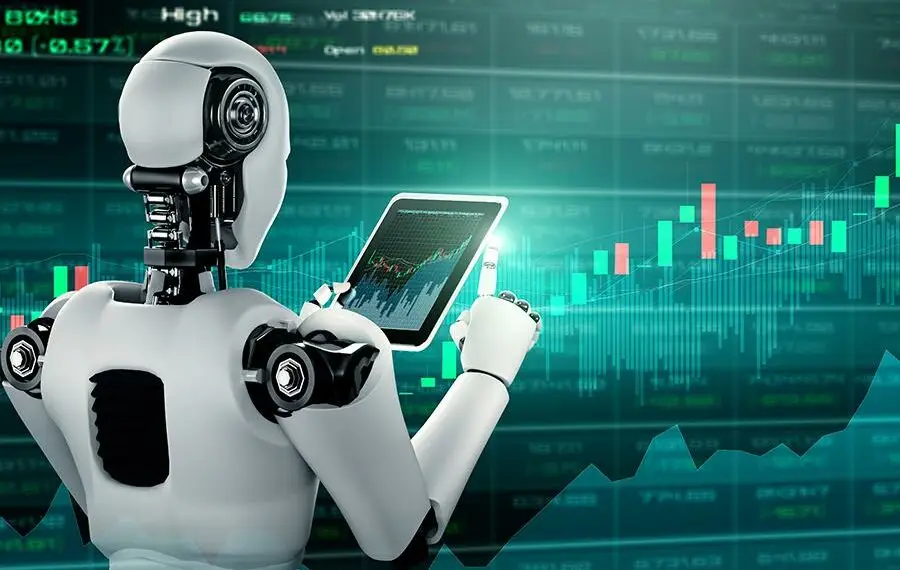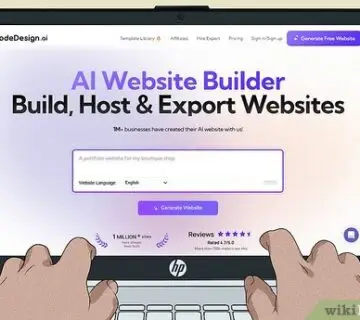Artificial intelligence web design has significantly transformed various industries, with web design being a notable example. Whether you’re a novice or a seasoned professional, AI offers innovative tools that simplify the creation and management of websites. This article explores how Artificial intelligence & web design is reshaping web design and development, providing insights into its applications, benefits, and best practices.
AI and Web Design: Understanding Artificial intelligence web design

Before delving into Artificial intelligence web design impact on web design, it’s essential to understand what AI entails.
Definition:
AI encompasses computer programs that mimic human cognitive functions, such as learning, problem-solving, and decision-making, based on data analysis.
AI applications span numerous sectors, including:
AI-driven communication tools
Automated marketing strategies
Computer-generated music
AI-assisted copywriting
AI is categorized into two primary types:
- Narrow AI (Weak AI): Designed for specific tasks, such as facial recognition or language translation.
- General AI (Strong AI): Possesses broader capabilities, enabling it to perform a wide range of tasks and adapt to new situations.
AI Advantages in Web Design and Web Development.
Read also AI-Fintech-900×570
Artificial intelligence & web design
offers numerous benefits that enhance the efficiency and effectiveness of web design and development:
Error Detection: AI can identify and correct coding errors, reducing the need for manual reviews.
Automated Testing: AI tools can perform comprehensive tests to ensure website functionality, saving time and resources.
Enhanced User Experience: AI analyzes user behavior to optimize website layouts and content for better engagement.
Personalized Content: AI algorithms can tailor content to individual users, increasing relevance and conversion rates.
By automating routine tasks, AI allows developers and designers to focus on creativity and innovation.
How Web Designers Use AI: A Data-Driven Approach
Web designers leverage Artificial intelligence & web design to make informed decisions based on data analysis. AI tools assist in:
User Behavior Analysis: Understanding how users interact with a website to improve navigation and content placement.
Design Optimization: Suggesting design elements that resonate with target audiences.
Performance Monitoring: Tracking website metrics to identify areas for improvement.
This data-driven approach ensures that design choices are aligned with user preferences and business goals.
Custom User Experience Thanks to AI-Powered Web Design
AI enables the creation of personalized user experiences by:
Content Customization: Displaying content based on user interests, location, and browsing history.
Dynamic Layouts: Adjusting website layouts in real-time to suit individual user preferences.
Predictive Recommendations: Suggesting products or services based on user behavior patterns.
Personalization enhances user satisfaction and fosters brand loyalty
Artificial Intelligence in Web Design: How to Create Your Own Website with AI
Creating a website with Artificial intelligence web design involves several steps:
Define Objectives: Determine the purpose of your website and target audience.
Choose an AI-Powered Website Builder: Select a platform that offers AI features, such as automated design suggestions and content generation.
Input Content: Provide necessary information, including text, images, and branding elements.
Customize Design: Utilize AI recommendations to refine layouts, color schemes, and typography.
Optimize for SEO: Implement AI-driven SEO tools to enhance search engine visibility.
Publish and Monitor: Launch your website and use AI analytics to track performance and make data-informed adjustments.
AI simplifies the website creation process, making it accessible to users withvarying levels of technical expertise.
Steps to Follow for Your AI Web Design
To effectively utilize AI in web design, follow these steps:
Research AI Tools: Explore available AI tools and select those that align with your project needs.
Plan Your Website Structure: Outline the pages and features your website will include.
Gather Content: Prepare high-quality content, including text, images, and multimedia elements.
Implement AI Features: Use AI tools for design suggestions, content optimization, and user behavior analysis.
Test Functionality: Ensure all website components function correctly across different devices and browsers.
Launch and Promote: Publish your website and employ AI-driven marketing strategies to reach your target audience.
By following these steps, you can create a responsive, user-friendly website that leverages AI’s capabilities.
Focus on UX
User Experience (UX) is a critical component of web design.
Artificial intelligence & web design contributes to UX by:
Streamlining Navigation: Analyzing user paths to simplify website navigation.
Improving Accessibility: Adjusting content and design elements to accommodate users with disabilities.
Enhancing Load Times: Optimizing images and code to reduce page load times.
A focus on UX ensures that visitors have a positive interaction with your website, encouraging repeat visits and conversions.
Artificial Intelligence and Web Graphics: Understand the Limits of AI
While Artificial intelligence web design offers significant advantages, it’s important to recognize its limitations:
Lack of Creativity: AI may struggle with abstract concepts and innovative design ideas.
Dependence on Data Quality: AI’s effectiveness is contingent on the quality and quantity of data it processes.
Potential for Bias: AI algorithms can inadvertently perpetuate biases present in their training data.
Understanding these limitations allows designers to use AI as a tool, complemented by human creativity and judgment.
Test and Optimize Regularly
Continuous testing and optimization are essential for maintaining a high-performing website:
A/B Testing: Compare different versions of web pages to determine which performs better.
Performance Monitoring: Use AI analytics to track metrics such as bounce rates, conversion rates, and user engagement.
Feedback Integration: Collect user feedback to identify areas for improvement.
Regular optimization ensures your website remains effective and competitive.
Artificial Intelligence and the Future of Web Development
AI is poised to play an increasingly significant role in web development:
Automated Coding: AI tools can generate code snippets, accelerating the development process.
Predictive Maintenance: AI can anticipate and address potential website issues before they impact users.
Enhanced Collaboration: AI facilitates better communication between design and development teams through shared insights and recommendations.
As Artificial intelligence web design technology evolves, it will continue to streamline web development, enabling more efficient and innovative digital solutions.



Hola, volia saber el seu preu.